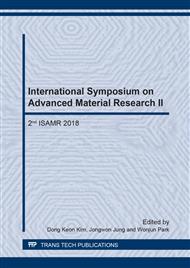p.64
p.73
p.79
p.85
p.95
p.101
p.109
p.115
p.122
Osteogenic Response of Osteoblastic Cells to Root-End Filling Materials
Abstract:
Perforations can occur during endodontic treatment, post placement and removal, and operative procedures. These defects have been treated with a variety of different materials such as resin ionomer, glass ionomer cement and intermediate restorative material. However, the osteogenic response to these substances using osteoblasts have been rarely studied. Thus, the aim of the present study is to evaluate the osteogenic response to resin ionomer (Geristore) and mineral trioxide aggregate (MTA). The surface roughness was significantly higher in the MTA than in the resin ionomer (p<0.05). After 72 hours of incubation mouse osteoblasts attached and spread well over the surfaces of resin ionomer and MTA. As a result from MTT assay, the number of cells gradually increased as the cell incubation time increased. In particular, control group showed higher cell proliferation than the other two groups on days 3 and 5. Resin ionomer showed more active early cell proliferation than MTA (p<0.05). The alkaline phosphatase (ALP) activity was significantly higher in the MTA surface than in the resin ionomer and glass coverslip (p<0.05). Resin ionomer was active in early cell proliferation and adhesion. Resin ionomer may be more suitable for cervical perforation or for perforation of adjacent to the gingiva requiring rapid wound closure. Also, MTA has a rough surface and low initial cell adhesion but because of its superior osteogenic response, it may be appropriate for the area close to the apical region, where the perforation site is wide and the bone tissue regeneration is necessary.
Info:
Periodical:
Pages:
95-100
Citation:
Online since:
July 2018
Authors:
Keywords:
Price:
Сopyright:
© 2018 Trans Tech Publications Ltd. All Rights Reserved
Share:
Citation:


